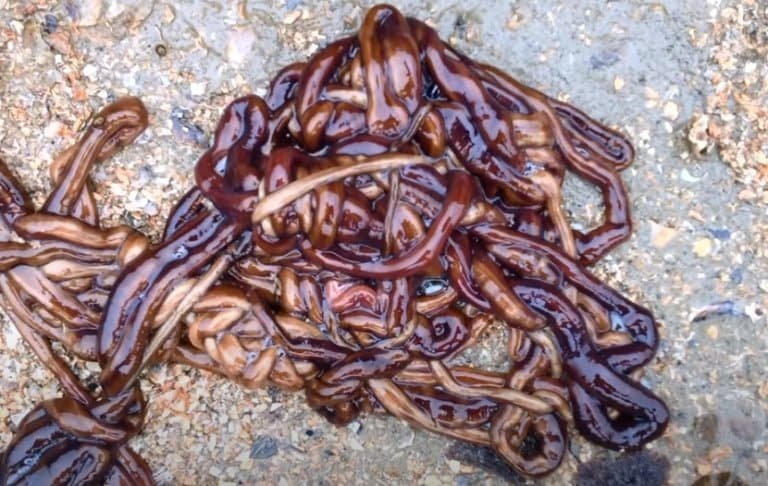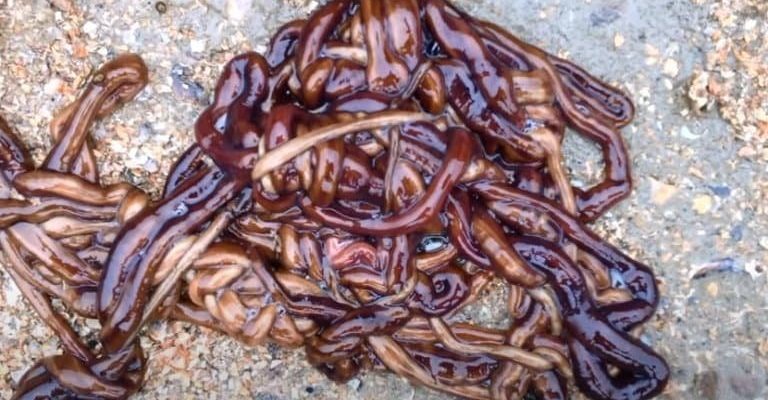
Let’s dive into this topic together. Bootlace worms, which belong to the species *Lineus longissimus*, are fascinating yet puzzling creatures. They can be found in coastal regions, often nestled in the sand or hiding among rocks. Despite their unusual appearance, they play a specific role in the ecosystem. But here’s the thing: understanding whether they are harmful to other animals requires a closer look at their biology and behavior.
What Exactly Are Bootlace Worms?
Bootlace worms are part of a group called *nemerteans*. If you’re scratching your head at that term, think of them as marine worms with a unique twist—they can have some remarkable lengths. Most bootlace worms are long, thin, and colorful, which might make you think they’re pretty, but they have a few secrets up their sleeves.
These worms have a characteristic body structure, made up of a soft and flexible exterior. Inside, they have a complex anatomy featuring a complete digestive system, which is pretty advanced for a worm. They also have an interesting predatory nature. They can be found in a variety of colors, like vibrant greens, yellows, or blues, making them both beautiful and a little bit mysterious.
Their hunting strategy is quite unique. Bootlace worms can expel a long, sticky proboscis to catch prey like small fish or crustaceans. This ability allows them to catch their dinner effectively, but it also raises questions about how they interact with larger animals in their environment.
Do Bootlace Worms Eat Fish?
One of the most common questions that arise is, do bootlace worms eat fish? The answer is a bit more complicated than just a yes or no. While bootlace worms primarily feed on smaller creatures like crustaceans and small invertebrates, they *can* pose a threat to juvenile fish if they find themselves in the right situation.
Honestly, bootlace worms are opportunistic feeders. They use their proboscis to snatch up whatever small prey happens to be near. So, if a baby fish is small enough and in the right place at the right time, a bootlace worm could potentially catch it. However, this doesn’t mean they’re actively hunting fish as a primary food source.
To put it simply, while they have the capability to eat juvenile fish, bootlace worms don’t necessarily target them. They usually stick to easier options, which means the risk to fish populations is minimal.
How Do Bootlace Worms Affect Their Ecosystem?
Every creature in the ocean has its role to play, and bootlace worms are no different. They contribute to the ecosystem in several unique ways. First, they help regulate the populations of the smaller animals they feed on, like shrimp and small worms. This balancing act is essential in maintaining healthy marine environments.
Additionally, bootlace worms themselves serve as a food source for larger predators, including some fish and birds. So, while they might seem like solitary creatures, they’re part of a larger food web. Think of them as a link, connecting different players in the marine drama.
Their presence can also indicate the health of coastal ecosystems. If you find bootlace worms thriving in an area, it could mean that the environment supports a diverse range of organisms, which is a good sign overall.
Are Bootlace Worms Dangerous to Wildlife?
You might be wondering if bootlace worms can harm other wildlife, especially larger marine animals. Thankfully, the answer is generally no. Bootlace worms are not known to be harmful to larger fish or marine mammals. They don’t have venom or any other harmful traits that would threaten larger wildlife.
In fact, their main role seems to be more about being part of the ecosystem rather than disrupting it. They do their job by feeding on smaller creatures and providing food for larger animals, creating a cycle of life that keeps the marine environment healthy.
However, environmental changes, such as pollution or habitat loss, could impact their populations, along with those of other marine species. So, while bootlace worms themselves aren’t a direct threat, their health is linked to the overall health of their habitat.
Do Humans Need to Worry About Bootlace Worms?
If you’re out enjoying the beach and come across a bootlace worm, you might be curious if they pose any threat to you. The good news is that, generally, humans don’t need to worry about bootlace worms at all. They are not aggressive and won’t attack unless provoked.
It’s crucial to remember that while these worms might look a bit alarming, they’re more concerned with their own survival than interacting with humans. If you gently move them out of your way, they’ll likely just slither back into the sand.
That said, it’s always good to be cautious when exploring marine environments. Make sure to respect the natural habitat and give all creatures plenty of space. After all, they’re just doing their job in maintaining the balance of their ecosystem.
So, do bootlace worms pose any threat to fish or wildlife? Overall, the answer leans towards no. While they can affect small fish in specific situations and contribute to the balance of marine life, they aren’t a significant threat in the grand scheme of things.
Consider bootlace worms as an interesting piece of the puzzle in marine ecosystems. They play their role, just like every other creature in the ocean. Understanding them helps us appreciate the complexity of life beneath the waves. Whether you find them fascinating or a bit weird, they’re a reminder of the beauty and mystery of our oceans. So next time you see one, you might just smile and think, “Hey, there’s a bootlace worm doing its thing!”

